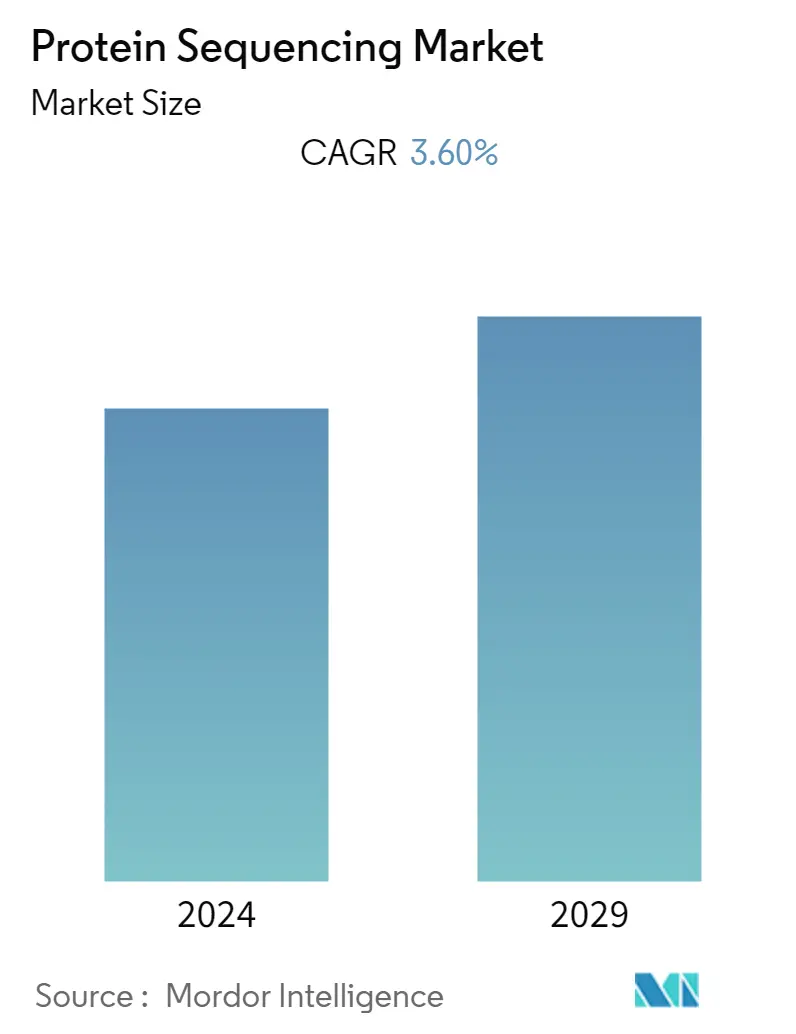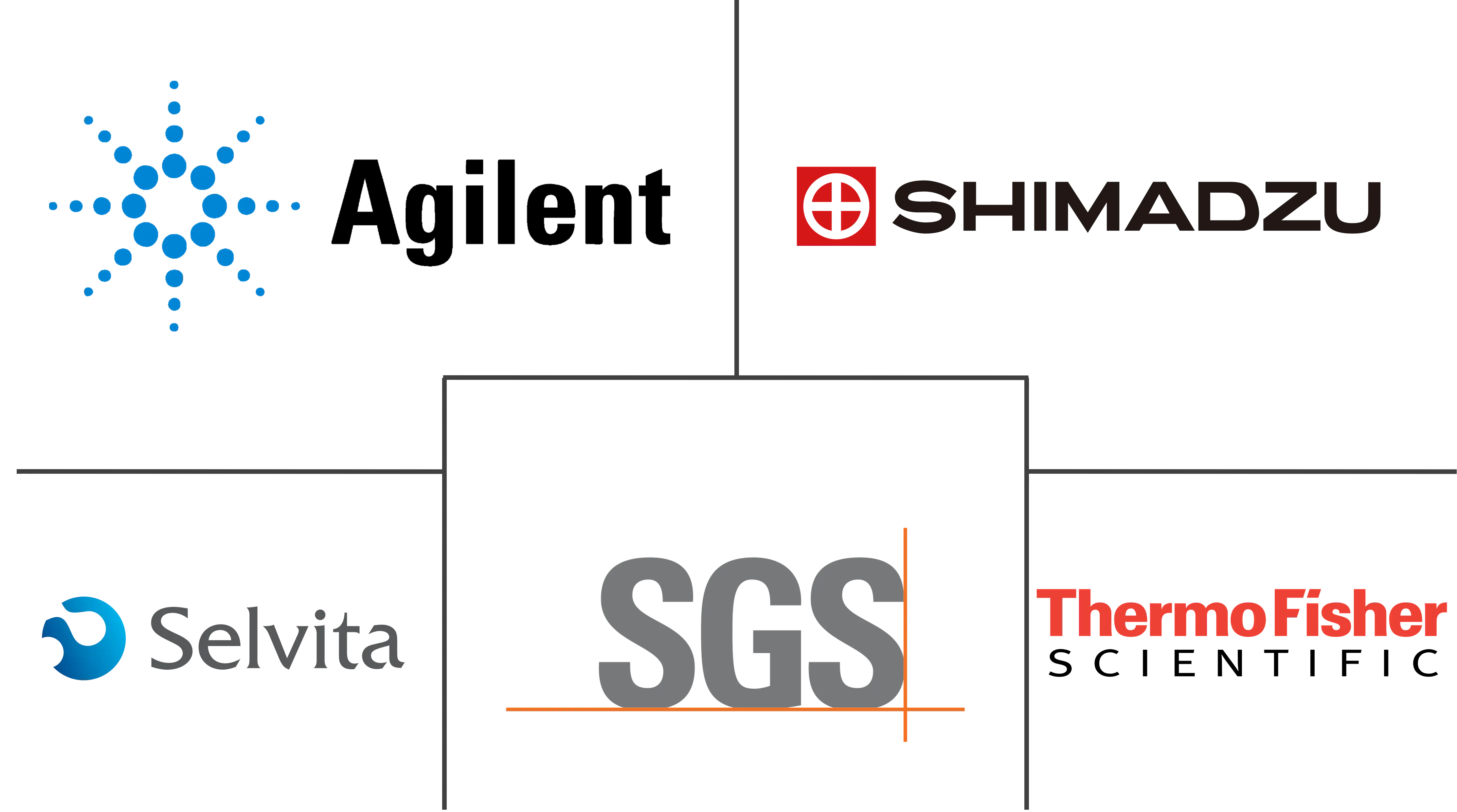Market Size of Protein Sequencing Industry

| Study Period | 2019 - 2029 |
| Base Year For Estimation | 2023 |
| Forecast Data Period | 2024 - 2029 |
| CAGR | 3.60 % |
| Fastest Growing Market | Europe |
| Largest Market | North America |
Major Players
*Disclaimer: Major Players sorted in no particular order |
Need a report that reflects how COVID-19 has impacted this market and its growth?
Protein Sequencing Market Analysis
The protein sequencing market is expected to register a CAGR of 3.6% over the forecast period.
COVID-19 has had a significant impact on the market since the detection of COVID-19 was utilized by the advancements offered by protein sequencing. For instance, as per the article published in July 2022 in Frontiers, the growing number of protein sequences deposited in biological databases on a daily basis, as well as the N protein conservation among viral strains along with computational approaches, were used to identify possible novel targets for SARS-CoV-2 and SARS-CoV-related viruses. Hence, such protein sequencing techniques for identifying the COVID-19 targets significantly impacted the market growth over the forecast period. The market is anticipated to witness growth in the coming years due to the increase in the utilization of protein sequencing in biomedical research.
The major factors for the growth of the protein sequencing market include the rising focus on target-based drug development and technological advancements and increasing funding for proteomics research. For instance, as per the article published in June 2022 in ACS Publications, to selectively target a protein and to design small molecules, knowing the protein structure with all its specific conformation is critical. AlphaFold2, a deep neural network-based machine learning programme, was able to predict unknown protein structures with exceptional accuracy and which helped the drug design more efficiently. Similarly, as per the article published in September 2022 in TechRxiv, the researchers presented a method for identifying single amino acids (AAs) in bulk or with a few molecules from a single binary measurement. It can be used in conjunction with Edman degradation (or another approach) to sequence a peptide or identify the parent protein from a partial sequence. This binary/digital methodology is based on the super specificity property of transfer RNAs (tRNAs), and it differs significantly from the traditional and newer single molecule (SM) sequencing approaches that use analog measurements. Hence, such technological advancements in the field of protein sequencing are likely to fuel market growth over the forecast period.
Furthermore, the rising funding for proteomic research is expected to boost the protein sequencing market over the forecast period. For instance, in June 2021, with USD 6 million in Seed Funding, MIT Spinout Glyphic Biotechnologies planned to build a proteomic platform to tackle the proteomics and protein analysis market. Additionally, in May 2022, Proteomics International Laboratories was awarded approximately USD 286,833 in funding from the Australian Government under the Medical Research Future Fund (MRFF) initiative. The funding is expected to support manufacturing the PromarkerD test in Australia.
Thus, due to the rise in advantages offered by protein sequencing and the increase in research funding, the studied market is anticipated to witness growth in the market over the forecast period. However, the high cost of protein sequencing equipment is anticipated to restrain the market growth over the forecast period.
